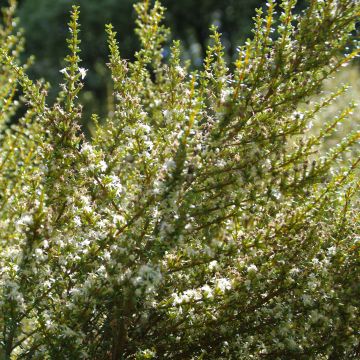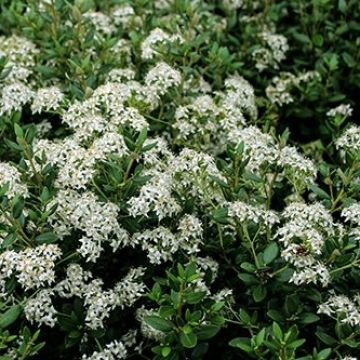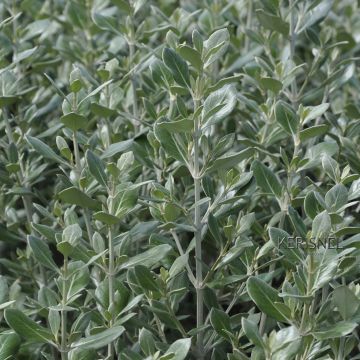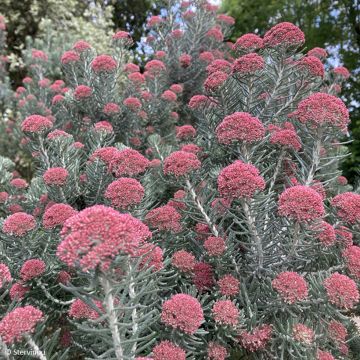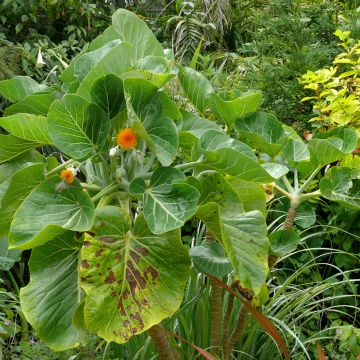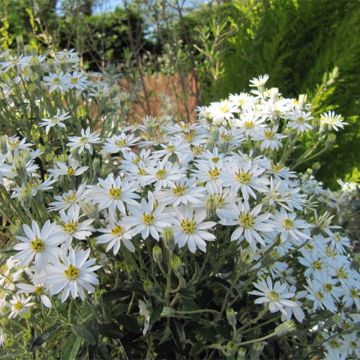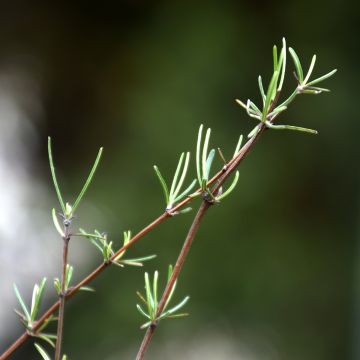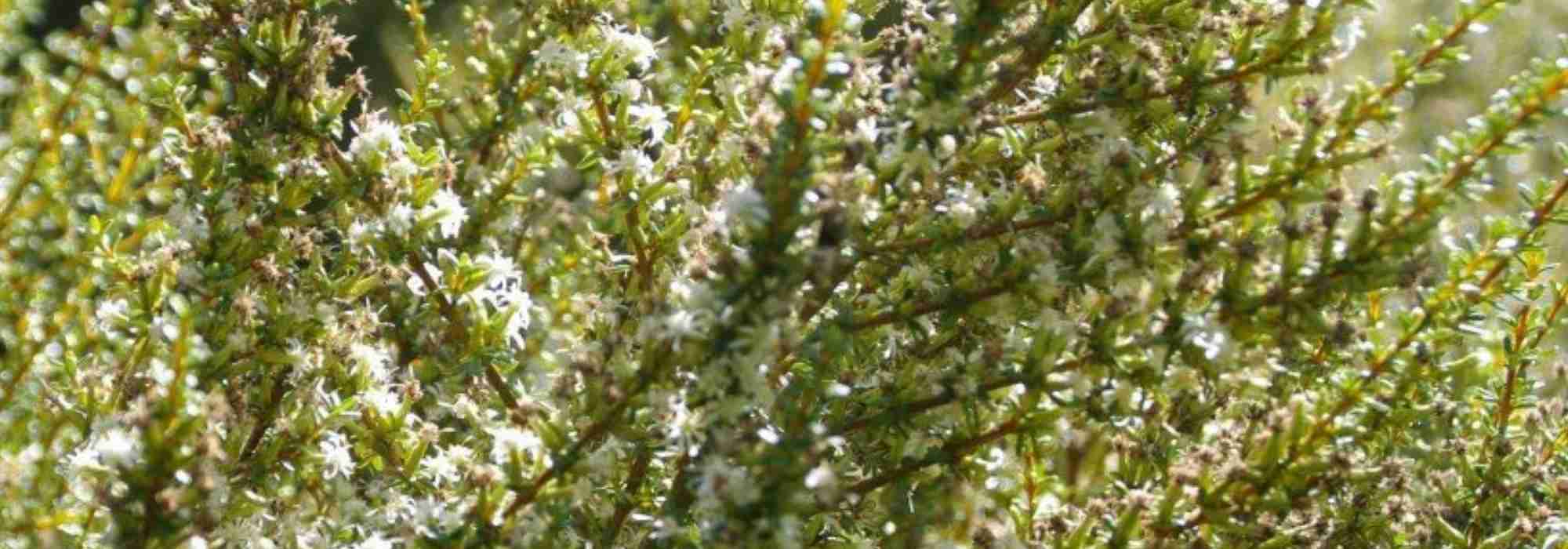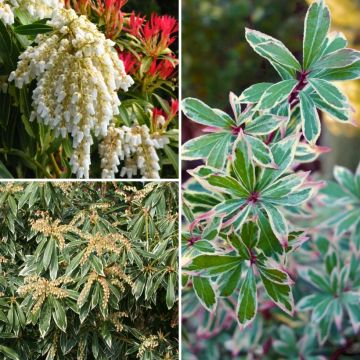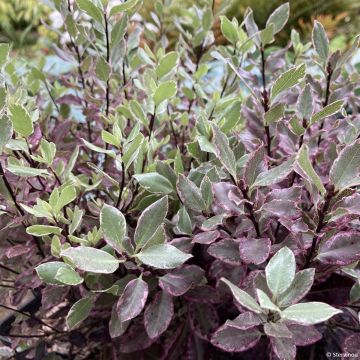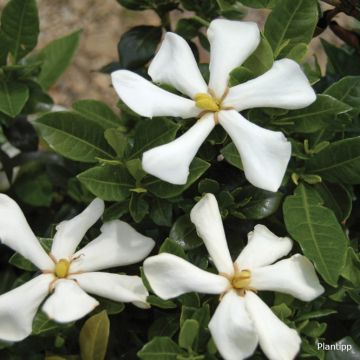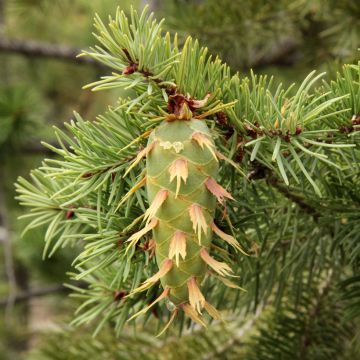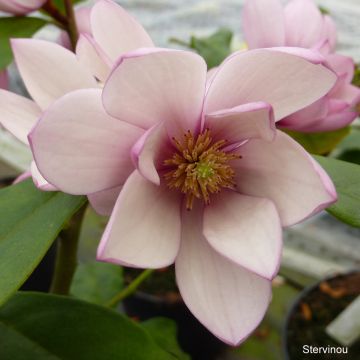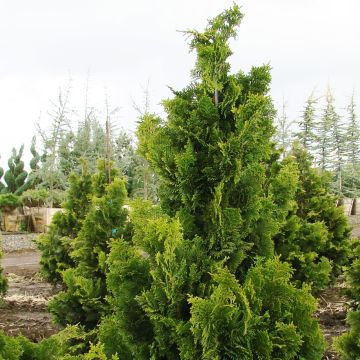

Olearia macrodonta Major - Houx de Nouvelle-Zélande
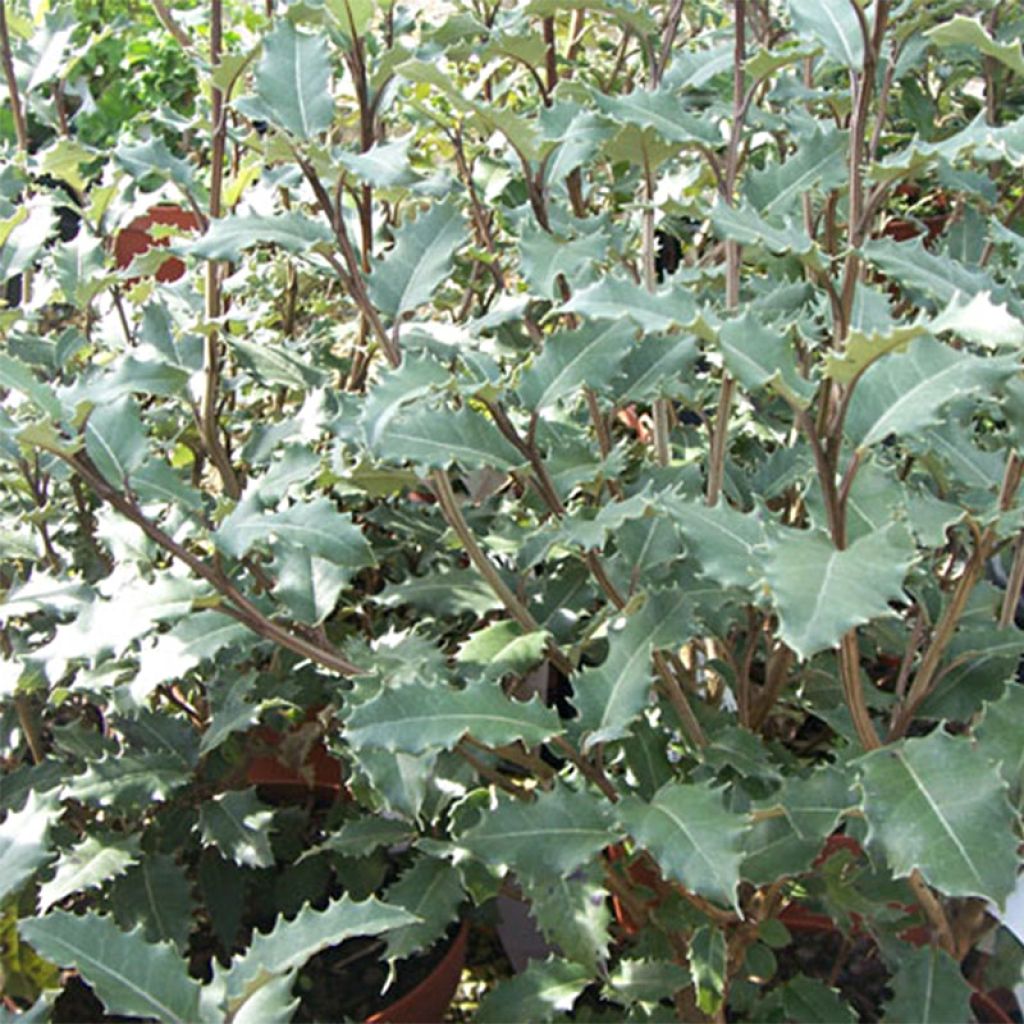

Olearia macrodonta Major - Houx de Nouvelle-Zélande
Olearia macrodonta Major
Olearia macrodonta Major
New Zealand Holly
Very beautiful young plant, in very good condition. Pot of well-proportioned habit. The pruning for transportation has been well done.
Claude L., 23/03/2018
Special offer!
Receive a €20 voucher for any order over €90 (excluding delivery costs, credit notes, and plastic-free options)!
1- Add your favorite plants to your cart.
2- Once you have reached €90, confirm your order (you can even choose the delivery date!).
3- As soon as your order is shipped, you will receive an email containing your voucher code, valid for 3 months (90 days).
Your voucher is unique and can only be used once, for any order with a minimum value of €20, excluding delivery costs.
Can be combined with other current offers, non-divisible and non-refundable.
Why not try an alternative variety in stock?
View all →This plant carries a 24 months recovery warranty
More information
We guarantee the quality of our plants for a full growing cycle, and will replace at our expense any plant that fails to recover under normal climatic and planting conditions.

Would this plant suit my garden?
Set up your Plantfit profile →
Description
The Olearia macrodonta Major, also known as New Zealand Holly because of the similarity of their foliage, is an evergreen bush from mild climates, appreciated for its beautiful gray-green dentate leaves with a silver underside. It flowers in summer, disappearing under a mass of small white and fragrant daisies gathered in large clusters. Not very hardy but resistant to sea spray and not demanding in terms of soil type, it's a perfect choice for coastal areas. Plant it in full sun, or partial shade in warm climates, in soil that is not too dry but well-drained.
The Olearia macrodonta Major is a beautiful bush reaching 2 to 3 m (7 to 10ft) in height and 1 to 2 m (3 to 7ft) in spread, with fast growth. It is a cultivar derived from O. macrodonta, a plant from the Asteraceae family, which can be found in the wild in plains, as well as in subalpine forests in New Zealand, up to 1200 meters (3937 feet) in altitude. The Major variety is mainly characterized by a more upright habit. Its angular and pubescent branches, when young, bear large undulate and dentate leaves, measuring 6-12 cm (2-5in) long and 3-5 cm (1-2in) wide, with a dark olive green color on the upper side, and covered with a white-silver felting on the underside. In summer, the foliage releases a subtle, slightly musky scent when crushed. The abundant flowering takes place in June-July, in the form of branched clusters, 10 to 15 cm (4 to 6in) wide, consisting of numerous fragrant, small white heads with yellow centers.
Hardy up to around -8°C, the Olearia macrodonta Major can be planted in the ground to form a medium-sized hedge, in combination with other evergreen bushes such as bushy ceanothus ('Italian Skyes', 'Concha', 'Puget Blue', 'Skylark'), a spring-flowering broom, Leptospermum, or even red-flowered callistemons (Callistemon citrinus 'Splendens'). It is perfectly adapted to coastal gardens on the oceanic facade as it is not very tolerant of drought and the heat of Mediterranean summers. For gardeners in more continental climates, it remains a beautiful conservatory plant. In a greenhouse or conservatory, it will pair well with an orange tree, a myrtle, a Tibouchina, or a mimosa, a quartet that is extremely decorative, evoking landscapes with exotic charm and scents.
Olearia macrodonta Major in pictures
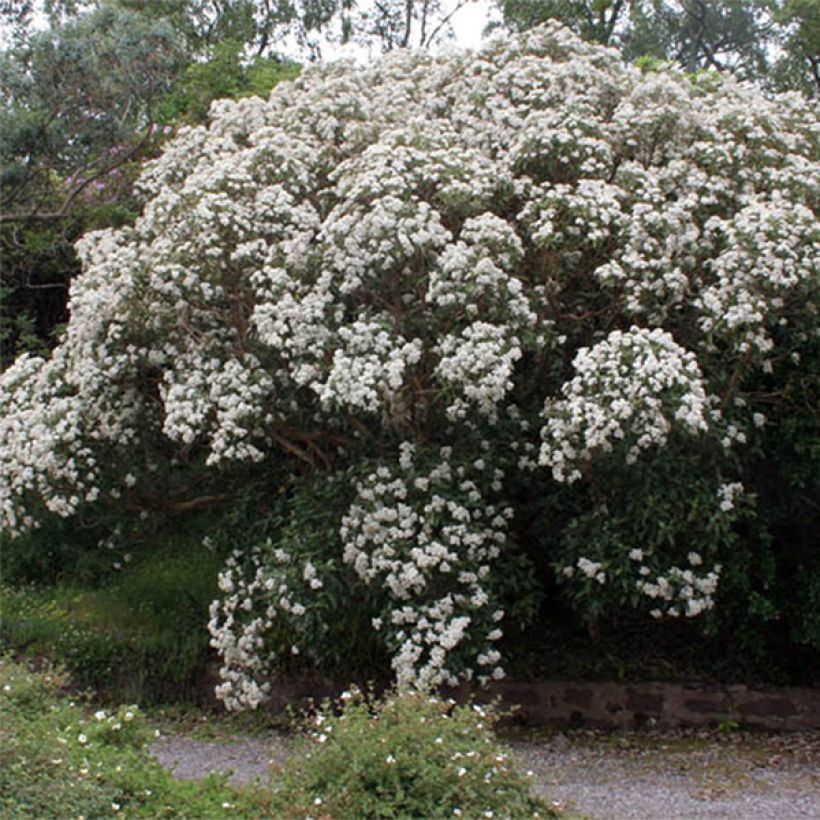



Plant habit
Flowering
Foliage
Botanical data
Olearia
macrodonta
Major
Asteraceae
New Zealand Holly
Cultivar or hybrid
Other Olearia
View all →Planting and care
The Olearia macrodonta Major will thrive in a light, well-drained, moist soils, especially in summer. Loose soil, whether humus-rich, slightly rocky or sandy, slightly acidic, neutral or even slightly limestone will do. It tolerates sea spray very well. Plant it after the last frosts in colder regions, and in September-October in warmer climates. It will flourish in full sun or partial shade. Under these conditions, it is hardy down to -7 or -8°C, and can live for many years. Cover it in winter in colder regions, isolating it from the cold as much as possible. Place it in the warmest corner of the garden, in full sun against a south-facing wall (except on the Mediterranean coast). However, it will be essential, in regions further away from the sea, to grow it in a large pot to store it during winter, in a bright, but unheated room. To shape it, you can prune the stems (slightly) in March-April to encourage the plant to branch out.
Pot cultivation:
Provide good drainage at the bottom of the pot, which should be large in volume. Use a lightweight substrate, enriched with leaf compost, and apply a little slow-release fertilizer in late winter and autumn. Water generously in summer, allowing the soil to dry out slightly between waterings.
Planting period
Intended location
Care
Planting & care advice
-
, onOrder confirmed
Reply from on Promesse de fleurs
Similar products
Haven't found what you were looking for?
Hardiness is the lowest winter temperature a plant can endure without suffering serious damage or even dying. However, hardiness is affected by location (a sheltered area, such as a patio), protection (winter cover) and soil type (hardiness is improved by well-drained soil).

Photo Sharing Terms & Conditions
In order to encourage gardeners to interact and share their experiences, Promesse de fleurs offers various media enabling content to be uploaded onto its Site - in particular via the ‘Photo sharing’ module.
The User agrees to refrain from:
- Posting any content that is illegal, prejudicial, insulting, racist, inciteful to hatred, revisionist, contrary to public decency, that infringes on privacy or on the privacy rights of third parties, in particular the publicity rights of persons and goods, intellectual property rights, or the right to privacy.
- Submitting content on behalf of a third party;
- Impersonate the identity of a third party and/or publish any personal information about a third party;
In general, the User undertakes to refrain from any unethical behaviour.
All Content (in particular text, comments, files, images, photos, videos, creative works, etc.), which may be subject to property or intellectual property rights, image or other private rights, shall remain the property of the User, subject to the limited rights granted by the terms of the licence granted by Promesse de fleurs as stated below. Users are at liberty to publish or not to publish such Content on the Site, notably via the ‘Photo Sharing’ facility, and accept that this Content shall be made public and freely accessible, notably on the Internet.
Users further acknowledge, undertake to have ,and guarantee that they hold all necessary rights and permissions to publish such material on the Site, in particular with regard to the legislation in force pertaining to any privacy, property, intellectual property, image, or contractual rights, or rights of any other nature. By publishing such Content on the Site, Users acknowledge accepting full liability as publishers of the Content within the meaning of the law, and grant Promesse de fleurs, free of charge, an inclusive, worldwide licence for the said Content for the entire duration of its publication, including all reproduction, representation, up/downloading, displaying, performing, transmission, and storage rights.
Users also grant permission for their name to be linked to the Content and accept that this link may not always be made available.
By engaging in posting material, Users consent to their Content becoming automatically accessible on the Internet, in particular on other sites and/or blogs and/or web pages of the Promesse de fleurs site, including in particular social pages and the Promesse de fleurs catalogue.
Users may secure the removal of entrusted content free of charge by issuing a simple request via our contact form.
The flowering period indicated on our website applies to countries and regions located in USDA zone 8 (France, the United Kingdom, Ireland, the Netherlands, etc.)
It will vary according to where you live:
- In zones 9 to 10 (Italy, Spain, Greece, etc.), flowering will occur about 2 to 4 weeks earlier.
- In zones 6 to 7 (Germany, Poland, Slovenia, and lower mountainous regions), flowering will be delayed by 2 to 3 weeks.
- In zone 5 (Central Europe, Scandinavia), blooming will be delayed by 3 to 5 weeks.
In temperate climates, pruning of spring-flowering shrubs (forsythia, spireas, etc.) should be done just after flowering.
Pruning of summer-flowering shrubs (Indian Lilac, Perovskia, etc.) can be done in winter or spring.
In cold regions as well as with frost-sensitive plants, avoid pruning too early when severe frosts may still occur.
The planting period indicated on our website applies to countries and regions located in USDA zone 8 (France, United Kingdom, Ireland, Netherlands).
It will vary according to where you live:
- In Mediterranean zones (Marseille, Madrid, Milan, etc.), autumn and winter are the best planting periods.
- In continental zones (Strasbourg, Munich, Vienna, etc.), delay planting by 2 to 3 weeks in spring and bring it forward by 2 to 4 weeks in autumn.
- In mountainous regions (the Alps, Pyrenees, Carpathians, etc.), it is best to plant in late spring (May-June) or late summer (August-September).
The harvesting period indicated on our website applies to countries and regions in USDA zone 8 (France, England, Ireland, the Netherlands).
In colder areas (Scandinavia, Poland, Austria...) fruit and vegetable harvests are likely to be delayed by 3-4 weeks.
In warmer areas (Italy, Spain, Greece, etc.), harvesting will probably take place earlier, depending on weather conditions.
The sowing periods indicated on our website apply to countries and regions within USDA Zone 8 (France, UK, Ireland, Netherlands).
In colder areas (Scandinavia, Poland, Austria...), delay any outdoor sowing by 3-4 weeks, or sow under glass.
In warmer climes (Italy, Spain, Greece, etc.), bring outdoor sowing forward by a few weeks.






























